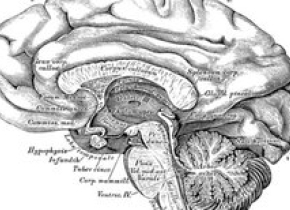
脑部扫描也许能揭示你是否喜欢冒险
愿意冒险打赌的志愿者的脑部可能拥有更大的杏仁核,它是一个与处理恐惧有关的区域。
播音/撰文:克里斯托弗·因塔利亚塔(Christopher Intagliata)
翻译:张艺箫
校对:杨枭
Here's the gamble: 20 bucks guaranteed…or a 50–50 chance of winning 60 bucks?
Which would you choose?
这里有一个赌注:奖金20块钱百分之百中奖,和奖金60块但百分之五十的概率中奖。你会选哪一个?
The answer might actually be evident in a brain scan, according to a study in which researchers posed actual terms like that to 108 young adults—and the stakes were real. The initial choice and then the outcome if they picked the bet determined how much they'd walk away with, after the study. The research is in the journal Neuron. [Wi Hoon Jung et al., Amygdala Functional and Structural Connectivity Predicts Individual Risk Tolerance]
一项研究表明,你的脑部扫描结果会显示出你想要选择的选项。在这项研究中,研究人员对108名年轻人进行了类似这样的真实赌注实验。他们在实验中选择的选项,就是他们在研究结束后拿到的奖励。 这项研究发表在Neuron杂志上。
"It does work out in our favor that people are risk averse because it means on average we're going to be paying people less." Joe Kable, a psychologist and neuroscientist at the University of Pennsylvania. After he and his team recorded the subjects' appetite for risk, they scanned their brains using various techniques that visualize anatomy and real-time activity.
“多数人会回避风险,这对我们来说是好事,因为平均来讲,我们减少了支付给实验者的费用。” 宾州大学的心理学家和神经学家乔·凯布尔(Joe Kable)说。 他和他的团队记录了受试者的选择之后,使用多种技术扫描受试者的大脑,将他们大脑的实时活动可视化。
And they found that individuals who were willing to throw the sure-thing $20 away for the chance of a higher payout were more likely to have larger amygdalas—that’s a region associated with processing fear, and weighing risk versus reward. They also saw in the gamblers' brains more synchronized activity between the amygdala and another region, called the medial prefrontal cortex. But there were fewer physical, white matter, connections between those two regions. Which might seem paradoxical.
他们发现,那些愿意为获得更高奖励而放弃20美元保证金的人,大多长有更大的杏仁核 。这是一个与处理恐惧有关的大脑区域,比起风险他们更在意奖励。 研究人员还在“好赌者”的大脑中发现,他们的杏仁核与一个叫作“内侧前额叶皮层”的区域有更多的同步活动。 但是这两个区域在生理、白质上的联系都很少。 这看起来似乎有些矛盾。
"To a first pass intuition you might expect, well, shouldn't these two be going together?" But Kable explains that even though you start out life with lots of those white matter connections, they tend to get trimmed and refined during development. So fewer physical connections between regions could actually indicate a more mature, more developed synchronization of activity between them.
“可能你的第一直觉是,这两个区域不应该有很多联系吗?” 但凯布尔解释说,即使这两个区域有在生命开始时有很多白质上的联系,这种联系也往往会在你的成长过程中得到修整和改进。 因此,较少的生理连接可能实际上暗示两个区域之间有更加成熟,更加发达的同步活动。
"It's possible within the population that we see of healthy young adults, a more pruned structural connection between the amygdala and the medial prefrontal cortex is indicative of a more developed connection and one that might be more effective or efficient, and thus lead to greater communication between the two areas."
“我们在受试的健康年轻人群中发现,他们的杏仁核与内侧前额叶皮层之间有更加精细的结构联系,这可能暗示了两者的联系更加成熟,更加有效,因此两个区域之间有了更多的交流。“
This type of scanning to predict behavior is in its infancy now. But down the line? "I can imagine it being used to help steer people to what the right place to put their money is when they're investing." And the study also hints at the fact that brain scans might reveal a lot more about your attitudes and your behavior than you might think. A good thing to keep in mind.
这种能预测行为的扫描技术目前还处于初级阶段。 但下一步呢? “我可以想象用它来帮助投资人把钱投入到正确的地方。” 这项研究还暗示,大脑扫描可能会比你想象中更多地揭示你的态度和行为。 这是一件值得记住的好事。
未经书面许可任何人不得复制或镜像
京ICP备11000850号
 京公网安备11010502039775号
京公网安备11010502039775号 信息网络传播视听节目许可证0111611号
国家科技基础条件平台

















